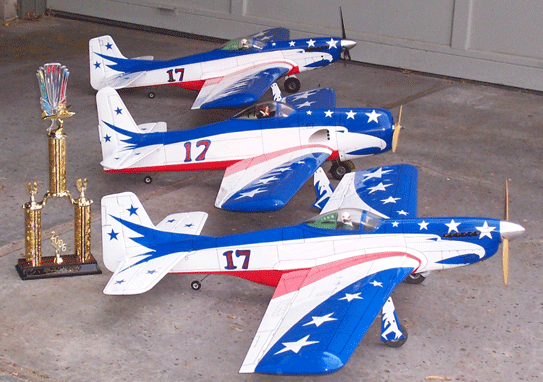

The study of venturi sizes for desired results in precision aerobatics was started by Pat Johnston, builder of these fabulous semi-scale stunters, whose performance are well-known to Northwest fliers. Dave Gardner adds to Pat's work in this article Pat Johnston photo.
Here are some expanded numbers, extrapolated from some original data by Pat Johnston. Pat's general formula was that the venturi net free area (less NVA size), in sq. inches, was the engine displacement x .045. That sizing is shown, as well as some variations, to allow for variations in rpm, which equate to variations in airflow.
The key factor seems to be throat velocity (along with proper NVA hole positioning.....and it AIN'T straight down the hole!) to give steady engine runs and good fuel draw.
To clarify the NVA hole positioning, it's usually best at about 10° below the 'horizontal' line of the venturi. In other words, when you install the NVA, watch the fuel hole and rotate the NVA body until the hole just disappears from sight......that's about the right place for the best fuel draw. This is not just my words.....Bill Lee experimented with this some years ago and found it to be the maximum fuel draw / lift position.
The numbers presented presume that the entire engine displacement is pulled through the venturi and ports on the intake stroke. Even though in reality, this isn't usually so, it gives a standard of reference to work from.
These are not represented to be the absolute answer to everyone's venturi sizing, but they give a reasonable starting point, with adequate fuel draw for Stunt work.
There are definitely exceptions to the rule......that seem to work.....but sizing by this chart, and selecting a venturi size that gives between 300 and 350 ft / sec, it should work consistently. It's another game if you're using PA type intakes, with only one side mounted NVA and the 'post' into the venturi. The same principles apply, but the numbers obviously are different.
I have not run an equivalent chart for other NVA, such as OS, but it wouldn't be a change in the formulae used, just a change of numbers to suit the smaller diameter NVA.
Enjoy, experiment, complain, rebut....whatever......this is just one more piece of information to use.
This page was upated Aug. 18, 2007